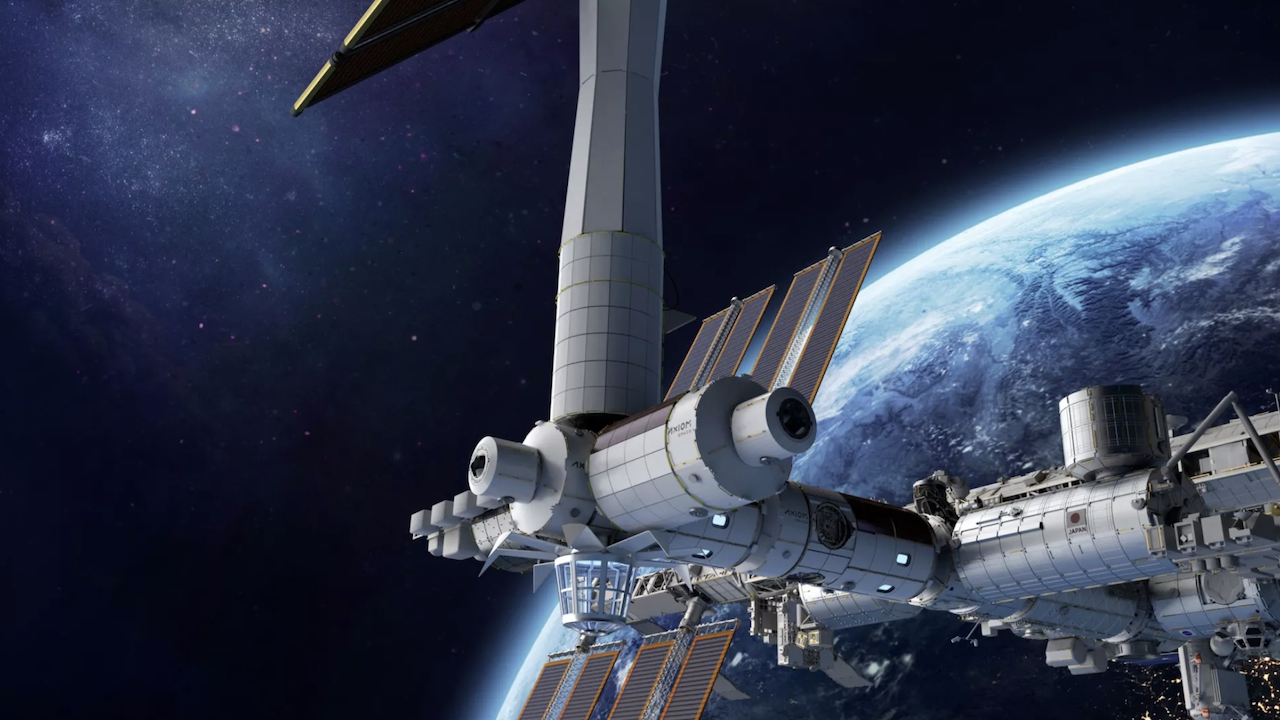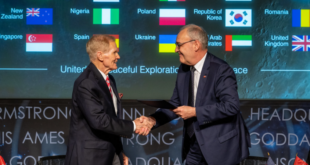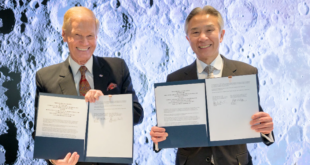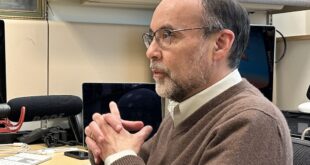by Christophe Bosquillon

Part 2: transitioning from the ISS to commercial space stations
What happens to the western micro-G ecosystem once the ISS is gone?
The moment the decommissioned ISS burns through re-entry and plunges into the Pacific Ocean will be heart-breaking. Granted, we will still have the Chinese Tiangong space station as a symbol of governmental and entrepreneurial prowess. But once the (American) private sector is solely in charge of orbital space stations other than Chinese ones, albeit with some friends and allies governments support as anchor customers, what will happen to global micro-G accessibility?
A paper published in 2021 by Christine Joseph and Danielle Wood entitled “Analysis of the Microgravity Research Ecosystem and Market Drivers of Accessibility“ looked into this problem. In their study, the authors note the following: “As NASA looks toward commercialization of low Earth orbit (LEO) and the development of a cislunar station, concrete plans for shifting the public–private relationship of the ISS are unclear. With the consistent need to continue microgravity research—from governments and private industry—understanding the socio-technical and policy issues that affect the ecosystem for future microgravity platforms is essential to maintaining an accessible and sustainable space economy”.
To evaluate and measure objectively the accessibility of the evolving microgravity research ecosystem, the authors developed a methodology paying particular attention toward “the market dynamics affecting barriers to entry for emerging space nations and non-traditional spaceflight participants” and concluded the following: “Evaluations found that end users utilize a variety of fully public, mixed public/private, and fully private pathways to gain access to microgravity research platforms and that mixed public/private pathways fostered the highest levels of economic and administrative openness.”
The business transition from the ISS to future commercial space stations
The business transition from the ISS to commercial space stations is an all-American affair. The competition takes place between Axiom Space, Nanoracks (based on a Lockheed Martin design), the Blue Origin-led “Orbital Reef” project that includes Sierra Space and others, and Northrop Grumman. NASA has already allocated $550mn for initial contracts split among these four platforms for business proposals to be submitted. One or more winner(s) should be selected around 2025, to be fully operational by 2028, thus allowing smooth users transition from the ISS to the chosen platform(s) by 2030. The first contract was awarded to Axiom Space, whose module attached to the ISS will be gradually expanded into a polyvalent platform until it detaches into an independent orbit. Polyvalent means that the platform will provide to a set of government and private sector customers a variety of services of scientific, technical, logistical, and industrial nature, with a significant share of revenues being furthermore derived from the space tourism market (provided tourism materializes).
Experiments will be packaged in devices the size of a big shoe box for only a few kilograms of cargo
It doesn’t sound entirely insane though to expect commercial platforms to start with polyvalent business models and be able to thrive to gather incomes from different types of sources. Clearly, one of these activities will be scientific research, testing, and proto-manufacturing that leverages micro-G. These activities, on a small weight and volume scale for starters, will likely go on for several decades. As we’ve seen in Part 1, it is reasonable to consider as an initial step the research and production of substances or material of small size, a weight range below the kilogram, and a rather high value to the material or life science domain and ultimately the industrial value chain of the market they relate to. That means nanograms to gram levels of pharmaceutical experimentation, and below-kilogram level of biomaterial, human body parts, agri-food substances, special alloy, or semi-conductor material proto-production. Experiment will be packaged in devices the size of a big shoe box for only a few kilograms of cargo in the back-and-forth transportation with the Earth’s surface, using routine transfer flights. The process is miniaturized, automated, and autonomous, with minimal human supervision.
A lights-out factory, also called a « dark factory », as defined by Siemens is “one where requirements for human activity are so minimal that the facility can operate in the dark with zero human intervention onsite”. This might be the way ahead to make micro-G economically sustainable. Such orbital facilities (like the one described by Space Forge) would be autonomous, secured from external interference, and use commercial stations for resupply. With progress in automation and autonomy, we probably will see such « dark factories » expand in orbit, covering pharmaceuticals, biomaterials, and materials such as electronic components and special alloys, plus potentially agri-food inputs (on this topic, please refer to Space Economy Insights with Prof. Matt Gillihall).
The importance of a relevant micro-gravity implementation partner
As a company specialized in hi-tech material or life sciences, you might master your production process, but you may have no clue about how the logistics of carrying a micro-G experiment over to an orbital station really work. This is why a micro-G implementation partner is essential. The company Redwire plays that role as part of the Orbital Reef consortium, for example: in addition to being responsible for large deployable structures and the Orbital Reef digital twin, Redwire also leads microgravity research payload development and operations.
Concrete plans for shifting the public–private relationship of the ISS are unclear.
Another relevant micro-G implementation partner is Space Tango. Fully accredited since 2017 thanks to a NASA Space Act Agreement, Space Tango has provided facilities to support iterative R&D and manufacturing on the ISS. The recent SPACETIDE Tokyo conference featured micro-G implementation partners from Australia such as EXPLOR Biologics Pty Ltd, and Japan, such as Dinow Inc and Space BD Inc. These panellists reminded the audience that the Chinese space agency is flying micro-G experiments monthly to the Tiangong station, therefore there should be no room for apathy and scepticism in the West.
So, there you have it, opportunities and constraints for micro-G research and manufacturing on a commercial space station in orbit. Part 3 and Part 4 take a deep dive into LambdaVision, an American venture renowned for its use of micro-G in the development of an artificial retina.

Christophe Bosquillon has a diverse professional background, having operated globally with a focus on the Indo-Pacific region. His experiences in Japan, the Koreas, Taiwan, China, ASEAN, India, Russia, and Australia have given him a deep understanding of the multipolar realpolitik of our world under the Pax Americana. With a background in engineering, trade, and foreign direct investment in industries relevant to Space Resource Utilization (SRU), such as mining, transportation, energy, manufacturing, agrifood, environment, and digitalization, Chris is committed to developing SRU value chains that benefit the Earth. As an executive, owner, writer, and founder of Autonomous Space Futures Ltd, Chris has extensive experience in collaborative policy crafting and works to develop space business and governance models relevant to society. He is a member of NGOs that provide input to the United Nations Committee on the Peaceful Uses of Outer Space (UNCOPUOS) legal subcommittee Working Group on Space Resources. Chris contributes to regulatory clarity on appropriation, priority, sustainability, and sharing in a way that balances national interests with civil society inclusion, provided a transparent due process is followed. When advocating for access to technology and space for the Global South, Chris believes that emerging space powers’ participation in space markets must be commensurate with their interest and involvement in international space politics. He believes that their ability to develop sovereign domestic capabilities with spillover potential is also essential. Chris is keen on ‘Peace Through Strength’ diplomacy and deterrence-based security as enablers of secure space access. He supports sovereign cislunar space situational awareness as mandatory for freedom of circulation in the space domain and deconflicted cooperation on the Moon.





